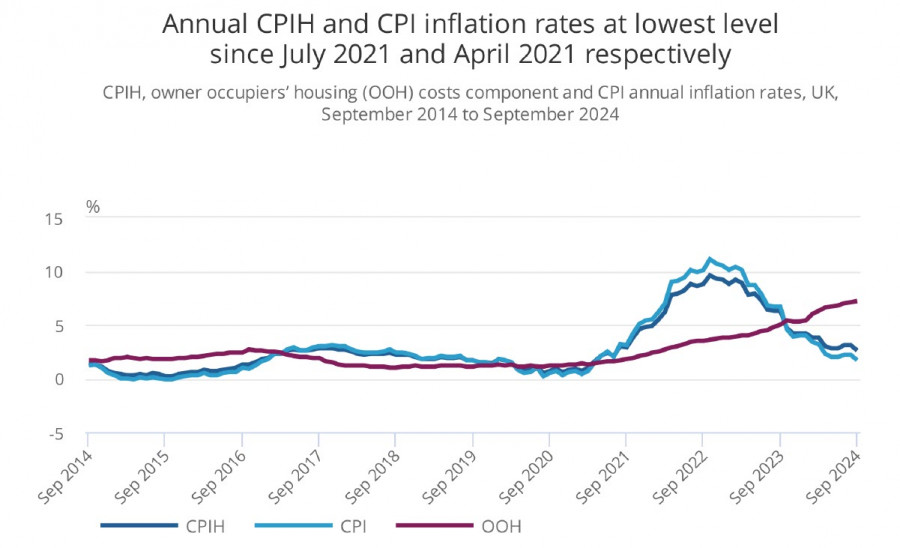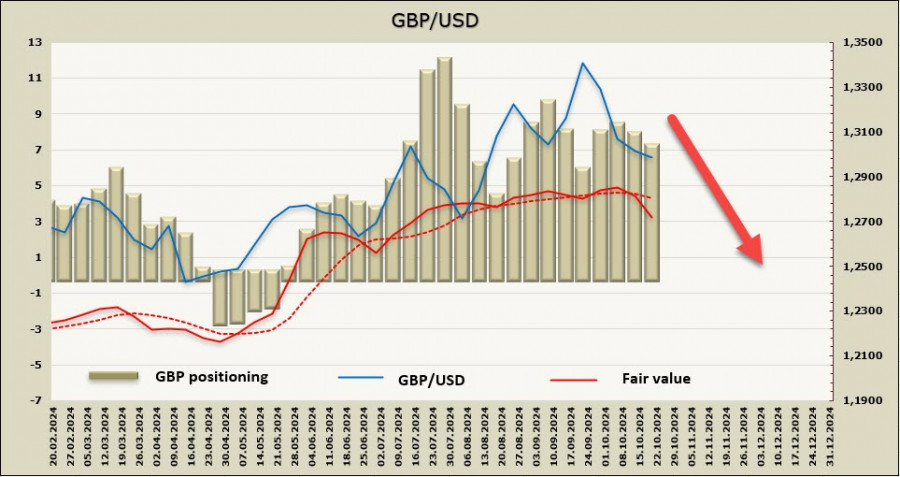The core inflation index in the UK slowed from 3.6% y/y to 3.2% in September, while the overall index decreased from 2.2% to 1.7%, with both figures significantly below forecasts. A slowdown in September was expected, but not to this extent. Moreover, the NIESR institute sees a risk of rising inflation due to base effects by the end of the year.

The pound, amidst the anticipated technical rise in inflation, had been looking more confident than most of its competitors until recently, as it was expected that the Bank of England would maintain a cautious approach to rate cuts. Now, however, uncertainty has increased significantly—if the BoE disregards such a sharp slowdown in inflation, it risks triggering an economic slowdown due to high borrowing costs and weak demand.
It's also worth noting that producer prices showed a much sharper slowdown in September than forecasted, which means the NIESR's prediction of a rise in inflation by the end of the year may be unfounded.
Megan Greene, a BoE's Monetary Policy Committee member, responded to the unusually rapid decrease in inflation by stating that policy easing should be cautious and gradual. In her view, lower borrowing costs could release pent-up demand in the economy and reignite inflation. Her remarks may have been intended to temper bearish sentiment somewhat, as the BoE is rightly concerned about an overly strong market reaction to the inflation slowdown. A revision of rate cut forecasts towards a steeper trajectory could create excessive pressure on the pound.
Long positions on GBP decreased by 617 million to 7 billion over the reporting week. The pound is one of the few currencies that still maintains a bullish positioning against the dollar, but it may not hold out for long—its estimated price has fallen sharply, and bearish sentiment has strengthened.

The pound still holds within the boundaries of a bullish trend, but it has fallen below the 1.3000 mark. The decline is modest, and it would be surprising if the pound did not react to inflation coming in below expectations with a decline, but there has yet to be a strong movement. We expect the pound to fall further, with the next support level at 1.2900/20. A move below this level would set the stage for a downward movement, with the local low of 1.2662 becoming the next target in focus.
The material has been provided by InstaForex Company - www.instaforex.comfrom Forex analysis review https://ift.tt/DlSo5Ep
via IFTTT
